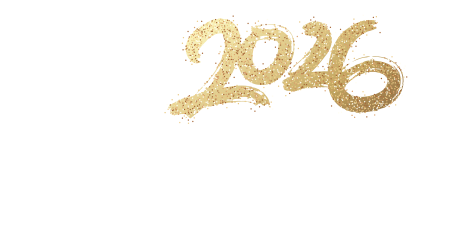National Validation Checklist
National Requirements for submission
Applicants are encouraged to supply documentation which has been produced electronically in that format. This applies whether the application is made on-line or whether a paper application is made. This facilitates the transfer of information to consultees and for the public to view planning proposals on-line with the greatest efficiency. It would be appreciated if the scale of the plans and paper size is no larger than is required to illustrate the proposals.
The national standards for on-line submission of electronic planning documents are as follows:
- Maximum single file size is 5 Mbytes;
- Maximum 25 Mbytes file size (the sum of all document file sizes). Where these maxima are exceeded the information should be submitted off-line using a file sharing transfer link via email to planning.help@ashford.gov.uk;
- Portable Document Format (PDF) is the recommended file format to ensure that they are accessible to consultees;
- All drawings shall specify the printing page size for which the scale applies;
- All drawings shall be correctly orientated for on-screen display
- All drawings shall include a scale bar and key dimensions;
- All documents and drawings shall be given a meaningful title and dated with drawings given a unique plan reference. For example: Block Plan drawing v1A.pdf or Design and Access Statement.pdf.
- Scanned documents must be a minimum of 200 dots per inch (dpi) resolution for black and white and 100 dpi for colour;
- All photographs in PDF file format and no larger than 15cm x 10cm
In addition:
- Updated or revised versions of plans or documents should be clearly named to show a change so that the new documents can be easily identified when uploaded. For example Block Plan drawing v1B.pdf or Design and Access Statement.pdf.
- Plans should not contain the phrase ‘Do not scale ’
Unless the application is made on-line through the Planning Portal, this authority only wishes to receive one paper copy of the following documents but reserves the right to request additional paper copies for consultation. For larger proposals and EIA development one paper copy and a file sharing transfer link via email to planning.help@ashford.gov.uk is requested.
National Validation Checklist
| Code | Requirement | Details |
|---|---|---|
| NV1 |
Application Form |
The Council’s relevant application form(s) are required and these must be signed and dated with all relevant sections completed. When submitting via the planning portal, Ashford’s application form will be automatically uploaded. Should you be submitting paper copies then download application forms from the Planning Portal. All the relevant questions should be answered and if not relevant to the application, then the words “not applicable” should be inserted for clarity. |
| NV2 | Application Fee |
Planning applications and other submissions cannot be processed without payment of the correct fee. The correct fee, as determined in The Town and Country Planning (Fees for Applications, Deemed Applications, Requests and Site Visits) (England) Regulations 2012, where one is necessary. As fees are subject to change, the latest version of these regulations should be checked or the Planning Portal’s fee calculator can be used. |
| NV3 | Ownership Certificates |
A completed, signed and dated Ownership Certificate A, B, C or D shall be submitted as set out under Section 65(5) of the Town and Country Planning Act 1990, and Section 14 of the Town and Country Planning (Development Management Procedure) (England) Order 2015 (as amended). The ownership certificate states the ownership of the whole of the application site, including land which gives access to the site from the public highway or where development abuts, crosses or simply overhangs the boundary with the adjoining land or property. For this purpose an owner is “anyone with a freehold interest or leasehold interest, the unexpired term of which is not less than 7 years”.
|
| NV4 | Notices |
Where the applicant is not the sole owner of the land, certificates B, C or D are completed and notice(s) need to be served in accordance with Article 13 of the DMPO, on every owner of any part of the land to which the application site relates giving 21 days notice of the application before it is submitted. The names and addresses on which notice has been served should be provided with the application. Where some or all of the owners of land to which the application relates are unknown, the applicant will need to specify the steps undertaken to find owners, such as Land Registry enquiries and the date of an advertisement in a newspaper published at least 14 days prior to the submission of the application. View a copy of the certificate. |
| NV5 | Agricultural Land Declaration |
A completed, signed and dated agricultural holdings certificate shall be submitted whether or not the site includes an agricultural holding. All agricultural tenants must be notified prior to the submission of the application. The agricultural holding certificate is incorporated into the standard application form for all except applications for approval of reserved matters, renewal of temporary consent, discharge or variation of conditions, listed building consent and lawful development certificate. |
| NV6 | Design and Access Statement |
Design and Access Statements (DAS) must accompany an application to the following:
The statutory requirements for DAS are set out in Article 9 of the Town and Country Planning (Development Management Procedure) (England) Order 2015. A DAS is a short report accompanying and supporting a planning application to illustrate the process that has led to the development proposal and to explain the proposal in a structured way. The level of detail required in a DAS depends on the level of complexity of the application and the length of the statement should vary accordingly but need not be long. Further advice is contained in MHCLG Guidance on making an application and also from the Design Council. If crime prevention measures for major development are not addressed in a DAS then these should be addressed in a separate document. The DCLG “Safer Places – The Planning System and Crime Prevention” provides guidance on how good planning can reduce crime by ‘designing out’ opportunities for crime and ‘designing in’ community safety. Applicants may be required to make provision for access, parking and sanitary conveniences for people with disabilities in applications concerning buildings accessible to the public. Your attention is drawn to legislation to provide access for the disabled. Further guidance by the Commission for Architecture and the Built Environment (CABE) (2006) can be found on the Design Council website. |
| NV7 | Location Plan |
|
| NV8 | Block Plan |
The block plan should be submitted, at an appropriate scale of 1:500 or 1:200. Plans will not be accepted unless the following is accurately shown:
And the following unless these would not influence or be affected by the proposed development:
|
| NV9 | Other Plans |
In addition to the location plan and block/layout plan, other plans should be submitted (dependent on the type of application and development proposed) to explain the proposal in detail. The drawings submitted should show details of the existing building(s) as well as those for the proposed development. Where existing buildings and or walls are to be demolished these should also be clearly shown. Existing and proposed elevations: All elevations should be submitted drawn to a scale of 1:50, or 1:100 and should show clearly the proposed works in relation to what is already there. All sides of the proposal must be shown and orientations labelled. It will not be sufficient to state front, side and rear elevation. Elevations should indicate the proposed building materials and the style, materials and finish of windows and doors. Blank elevations must also be included; if only to show that this is in fact the case. Where a proposed elevation adjoins another building or is in close proximity, the drawings should clearly show the relationship between the buildings, and detail the positions of the openings on each property. Existing and proposed floor plans: These should be shown at a scale of 1:50 or 1:100 and be labelled to show the existing and proposed usage. Where buildings or walls are to be demolished these should be clearly shown. New buildings should be shown in relation to adjacent buildings. Existing and proposed site sections and finished floor and site levels: In cases where a proposal involves a change in ground levels or is on a sloping site, drawings at a 1:50, 1:100 or 1:200 scale should be submitted showing a cross section through the proposed building or site. Illustrative drawings should be submitted to show both existing and finished levels. The drawings may take the form of contours, spot levels or cross or long sections as appropriate. Roof Plan A roof plan is used to show the shape of the roof and is typically drawn at a scale smaller that the scale used for floor plans. Details such as roofing materials, vents and their location are typically specified on a roof plan. Proposed Landscaping or Restoration Plans Where a development involves changes to land contours, soils, substrates, waterbodies, vegetation and/or landscape features then a proposed landscaping and restoration concept is expected to be depicted on one or more plans. |
| NV10 | Biodiversity Net Gain (BNG) |
Information relating to the ‘Biodiversity Gain Condition’ as defined in Paragraph 13, Schedule 7A of the 1990 Act must accompany an application for the following: Applications for qualifying development (major development and small sites development*) 1. A statement to confirm either that: (a the application is subject to the Biodiversity Gain Condition; or (b) the application is not subject to the Biodiversity Gain Condition, and the reasons why**. 2. Where 1 (a) applies: (a) A completed biodiversity metric calculation*** showing the pre-development calculation of the biodiversity value of the onsite habitat, for the purpose of the of biodiversity gain plan; (b) The biodiversity value or values of the onsite habitat; (c) The publication date of the of the biodiversity metric calculation. This should be either: (d) Where (c)(ii) applies, a statement justifying the reasons for the earlier date; (e) A statement confirming if any development activities as mentioned in paragraph 6 or 6A of Schedule 7A to the 1990 Act have taken place; including confirmation and evidence of the date immediately before the activities were carried out. (f) A description of any irreplaceable habitat, corresponding to the descriptions in Table 1 or in column 1 of Table 2 of the Schedule to the Biodiversity Gain Requirements (Irreplaceable Habitat) Regulations 2024, that exists on the publication date the biodiversity metric calculation. (g) A scaled plan (UKHAB V2.0 preferred, with north arrow) showing the location and extent of all baseline on-site habitat, included in the biodiversity metric calculation, as well as any irreplaceable habitat. * Definition of qualifying development can be found on our website. **BNG exemptions are set out in the Biodiversity Gain Requirements (Exemptions) Regulations 2024. ***Further guidance on the metric calculation/tools available ,can be found on our website: http://www.ashford.gov.uk/bng
Information required for all applications where planning permission has been granted and where the BNG condition applies:
|






